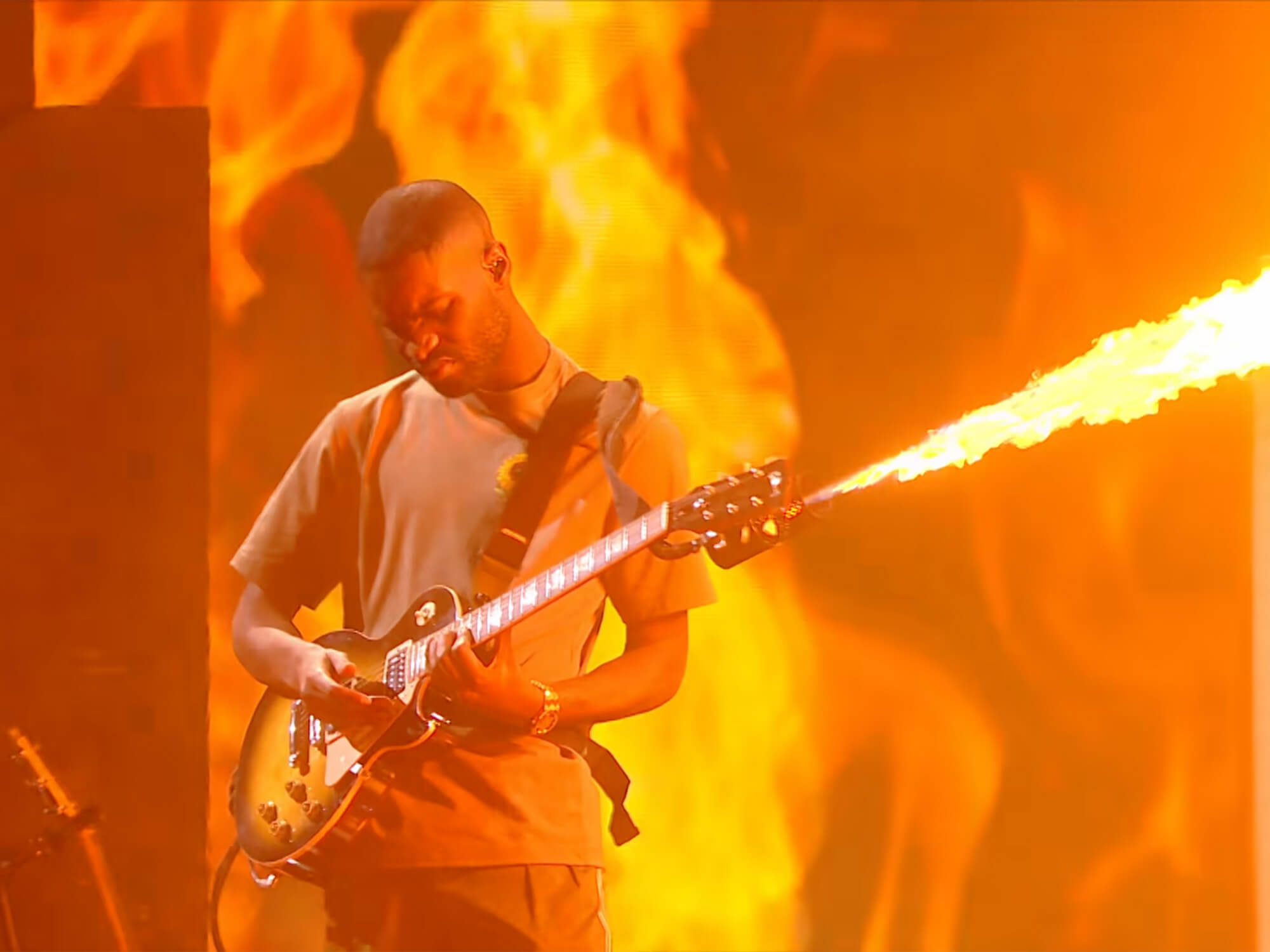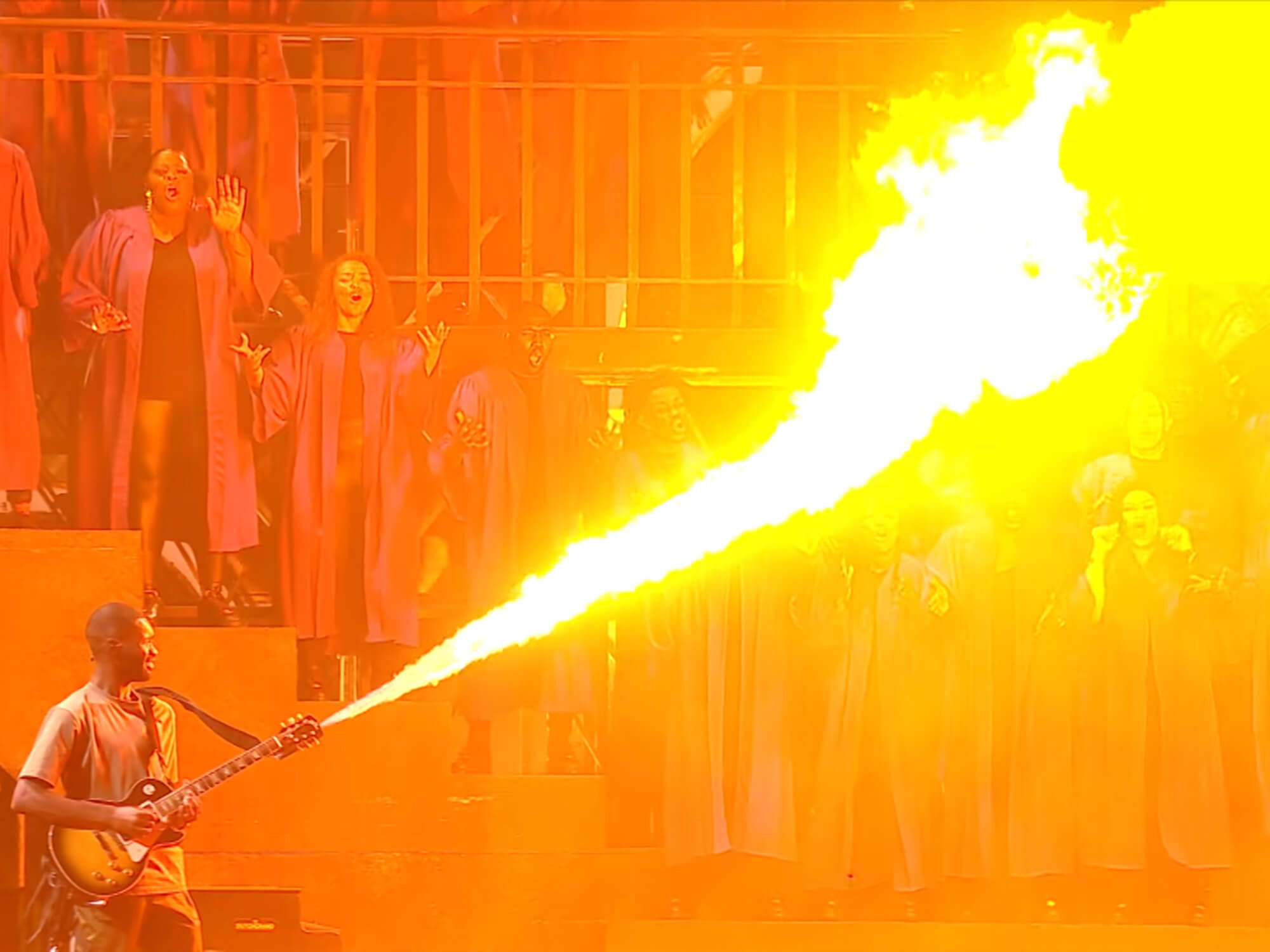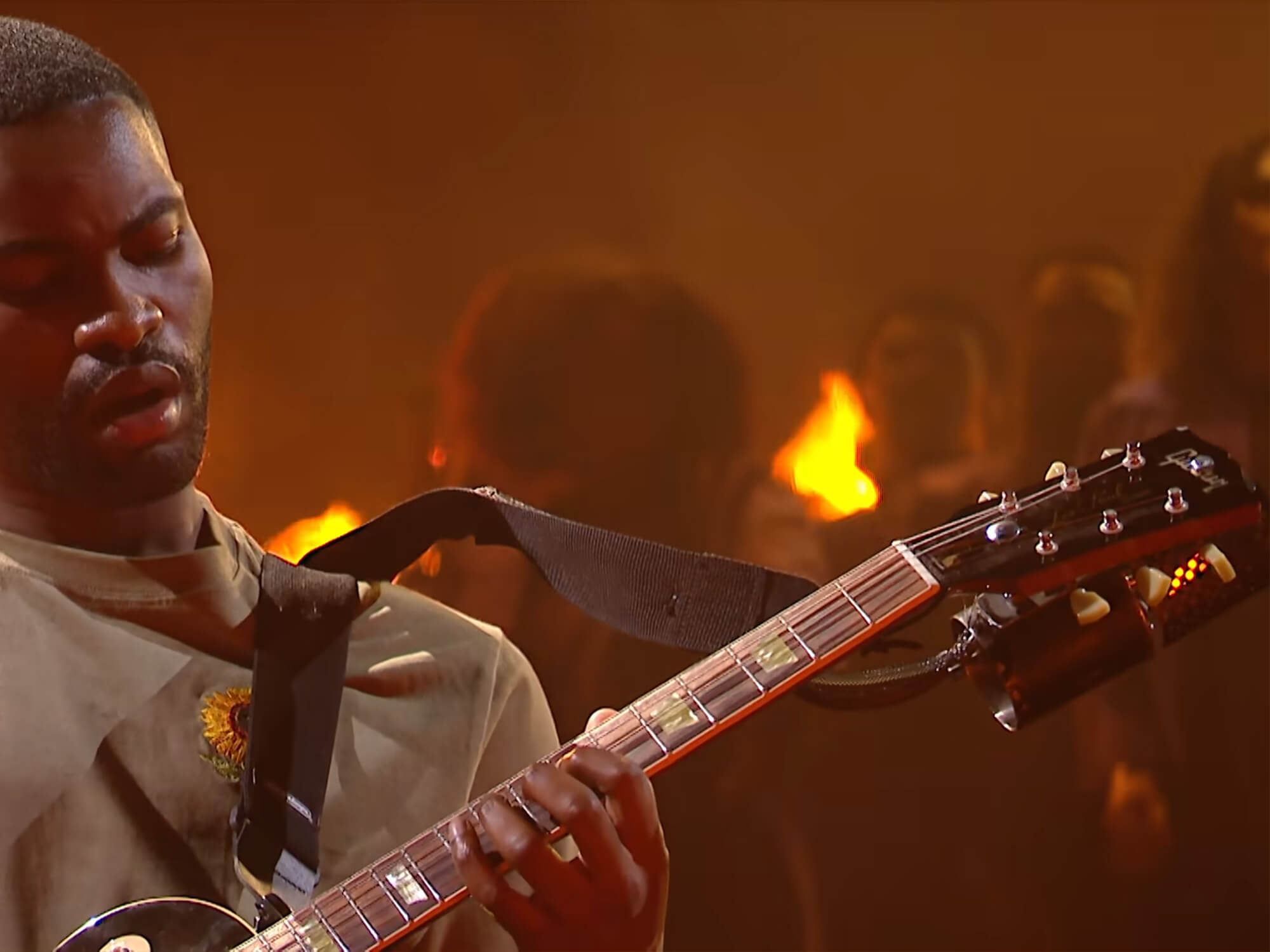How Biffy Clyro’s guitar tech Richard Pratt made Dave’s BRIT Awards flamethrower guitar actually playable
It turns out having a high-powered heating coil anywhere near a guitar pickup can get a little noisy.

Image: Dave via YouTube
Richard ‘Churd’ Pratt is perhaps best known to Guitar.com readers as the man behind the excellent Gone Fishing Effects, as well as the guitar technician for Biffy Clyro. But three weeks ago, he was called upon to take a break from building pedals and Biffy Clyro, for something a little more incendiary. Pratt was the man behind the flamethrower guitars played by Dave and his guitarist at last week’s BRIT Awards, which closed out the awards show by blasting metres-long bouts of flame from their headstocks during a performance of In The Fire.
We caught up with Pratt to find out just how you go about building a flamethrower guitar. Spoiler alert: you won’t be able to do it at home. Please don’t try.
Where did the flamethrower guitar concept come from?
“We’ve had lot’s of pyro at lots of shows, but I’d never done flaming guitars before now. I was booked to do the BRITs with Dave anyway, just looking after the band. And then down the grapevine it transpired that Dave had been learning the guitar – he’d only been playing for four months, but he’d been with his guitar teacher every single day, just learning that solo, basically, along with all the tricks of the trade.
“So the show designer, his name is Bronski [from the production duo Tawbox], who came up with the idea of the flamethrower guitars, it was all his concept.
“But the pyro company I was working with told us you can either have the pyro or you can have the solo. They basically told us we’d have to mime it, they said: ‘there’s no way this will be playable.’ But then the people from Dave’s side were saying: ‘it absolutely has to be playable.’ So that was the challenge”

What were the challenges of actually building the guitar?
“I went to the charity shops in Preston and bought every plank they had to work on. Initially, the plan was to route the channel in the back of the neck so that you could run the mains and the liquid hose inside there, and I was going to epoxy off the top.
“So I had a good go at doing that – but then it came to light that the pyro company wanted their stuff back, they wouldn’t sell it to us, basically.
“So although I tried really hard to integrate it into the instrument itself, it ended up having to be a bolt-on scenario. I had to drill through the headstock of the Gibson for the two M6 bolts. These held the actual head of the flamethrower up. Dave had to wear a bodypack strapped to his leg, which had the trigger and all the technology in there.
“The propellant hose and the mains power for the heater coil was on a separate guitar strap, attached to the headstock, so they could play all the way up the neck. The challenge was having mains power running so close to the guitar cables. As soon as we turned on the heater coil on, we were getting awful noises coming from the guitar. It’s almost like a kettle coil – it’s an element that gets really, really hot, and you shoot the propellant over it to ignite it.

“The electromagnetic interference was unplayable on the Strat that the session guitarist had, as it had single coils – the Gibson was okay with the humbucker. We ended up putting the session guy on an Epiphone Les Paul, just so he was on humbuckers as well – and we gated the rigs to the nth degree. I ended up using three gates in each chain: one right at the start, one at the end and one in the middle just to try and crush the noise.”
Given all these challenges, are you keen to try to do this again or are you done with flamethrowers for now?
“I’d love to do it again – now that I know what I’m doing! I’d like to make it more integral to the instrument itself next time. But we just didn’t have the means or the time to do something like that.
“It’s just how intense the learning curve was, over just a week. The whole schedule was tight – it was an eight-minute changeoover from Ed Sheeran, who was playing before. Just eight minutes of advert break to get the entire set on and line checked, then straight into the show. So nothing could go wrong.”
Speaking of going wrong – seeing the blasts of flame shooting out in front of the gospel choir was a little nerve-wracking…
“Thankfully, there were the guys from the pyro company watching him from behind the set. Someone with the safety cutoff, and someone else doing the cues. So if he turned and pointed the guitar the wrong way, towards the choir – the safety cutoff wouldn’t have let the guy cueing along to the music fire it!”
